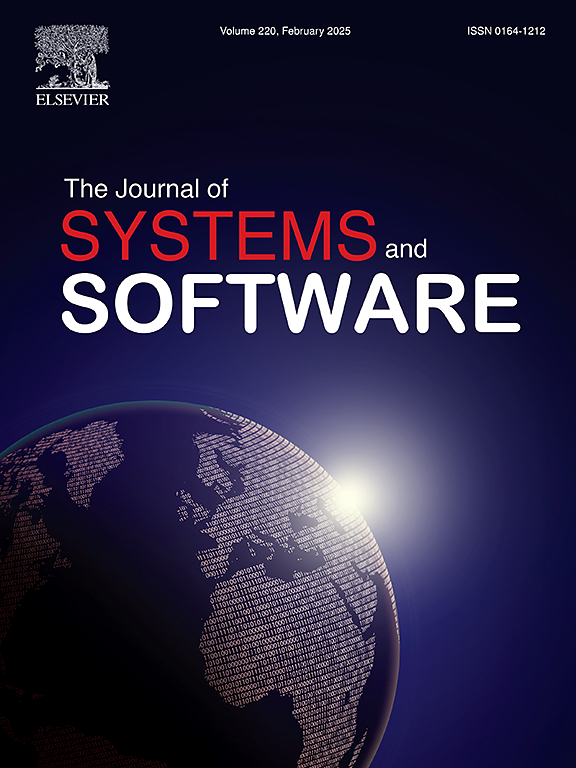Applying SOLID principles for the refactoring of legacy code: An experience report
IF 4.1
2区 计算机科学
Q1 COMPUTER SCIENCE, SOFTWARE ENGINEERING
引用次数: 0
Abstract
The presence of technical debt in legacy systems is an inevitable consequence of years of development. Metrics play a significant role in informing the prioritisation process of maintenance activities to reduce this debt. However, it is important to note that not all metrics are equally important or readily available in real industrial settings.
This paper summarises an experience report of refactoring activities performed at a Dutch partnering company, aimed at identifying, prioritising and repaying parts of the architectural technical debt accumulated in two decades of development.
Given the size of the refactoring task, a data-driven prioritisation was necessary, and based on the impact that the maintenance activity would have on the base system. However, the metrics available from the monitoring of the system formed a limited set, and were not always focused on architectural aspects. Even so, the impact analysis was performed and resulted in the selection of a subset of components that needed urgent maintenance.
The refactoring of the identified components was centred around the well-known SOLID design principles, particularly the Dependency Inversion (DI) principle. Additionally, a set of recurring actions was established into ‘refactoring patterns’ and systematically applied to more than 5,000 source, header and custom domain language files.
This work, albeit limited to the period where the activity was planned for, was well received by the industrial collaborator. The patterns have proven very valuable in the process of maintaining such a large project scope. The data-driven approach and the identified patterns have helped the team navigate this large space and consistently refactor similar architectural issues that fall under the same category.
应用 SOLID 原则重构遗留代码:经验报告
遗留系统中存在技术债务是多年开发的必然结果。在确定维护活动的优先次序以减少技术债务方面,度量标准发挥着重要作用。本文总结了荷兰一家合作公司开展重构活动的经验报告,该活动旨在识别、优先处理和偿还二十年开发过程中积累的部分架构技术债务。然而,从系统监控中获得的指标非常有限,而且并不总是集中在架构方面。尽管如此,我们还是进行了影响分析,并从中选出了需要紧急维护的组件子集。对已确定组件的重构是围绕众所周知的 SOLID 设计原则进行的,尤其是依赖反转(DI)原则。此外,还将一系列重复出现的操作归纳为 "重构模式",并系统地应用于 5000 多个源文件、头文件和自定义领域语言文件。事实证明,在维护如此庞大的项目范围的过程中,这些模式非常有价值。数据驱动的方法和已识别的模式帮助团队驾驭了这个巨大的空间,并始终如一地重构属于同一类别的类似架构问题。
本文章由计算机程序翻译,如有差异,请以英文原文为准。
求助全文
约1分钟内获得全文
求助全文
来源期刊

Journal of Systems and Software
工程技术-计算机:理论方法
CiteScore
8.60
自引率
5.70%
发文量
193
审稿时长
16 weeks
期刊介绍:
The Journal of Systems and Software publishes papers covering all aspects of software engineering and related hardware-software-systems issues. All articles should include a validation of the idea presented, e.g. through case studies, experiments, or systematic comparisons with other approaches already in practice. Topics of interest include, but are not limited to:
•Methods and tools for, and empirical studies on, software requirements, design, architecture, verification and validation, maintenance and evolution
•Agile, model-driven, service-oriented, open source and global software development
•Approaches for mobile, multiprocessing, real-time, distributed, cloud-based, dependable and virtualized systems
•Human factors and management concerns of software development
•Data management and big data issues of software systems
•Metrics and evaluation, data mining of software development resources
•Business and economic aspects of software development processes
The journal welcomes state-of-the-art surveys and reports of practical experience for all of these topics.
 求助内容:
求助内容: 应助结果提醒方式:
应助结果提醒方式:


